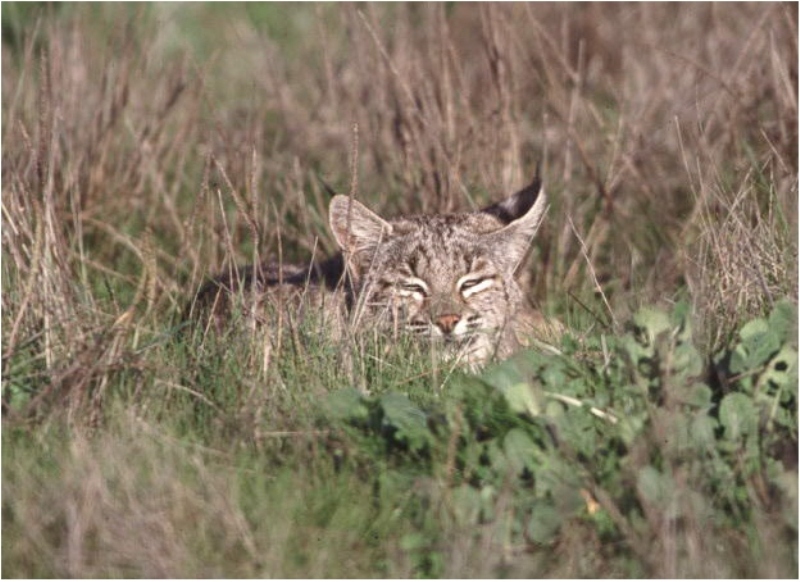The Bobcat - A Surprise in the Grass
By Dave Hanks
My wife and I have often mused about how one of us could say: “I wish we would see a -------.” Often that animal would suddenly appear around the next corner. Such was the case one California evening. We were hiking and
scouring the area for animals. I made the comment: “I wish we would see a Mountain Lion” and my wife said: “Well, there’s one”. It was a cat all right, but not a lion. It was a Bobcat hunkered down in the grass, waiting for us to pass it by. It must have felt hidden, because it allowed me to stalk quite close.
Lynx rufus is the size of a raccoon and looks like an overgrown house cat - except for the ear tufts and bobbed tail. Its color is usually a yellowish-brown spotted with black, gray, and white. While not as big as its cousin the Lynx, it is more tenacious. It is strong for its size and will attack larger animals. However, most of its prey consists of ground birds and small mammals. These are caught by careful stalking or by ambush. Rabbits and hares are especially preferred. The availability of prey species dictates its range, which can be anywhere between 5 and 50 square miles.
Bobcats will den in dense thickets, hollow logs, or in trees. They have a gestation of 50 to 60 days and usually give birth to two litters a year. Two kittens per birth is average.
It is an excellent tree climber and climbs to escape danger. If you come upon Bobcat tracks, note that the hind print will partially cover the fore print. Like all wild American felines, it is solitary, nocturnal, and secretive. We were very lucky to see one.
|
